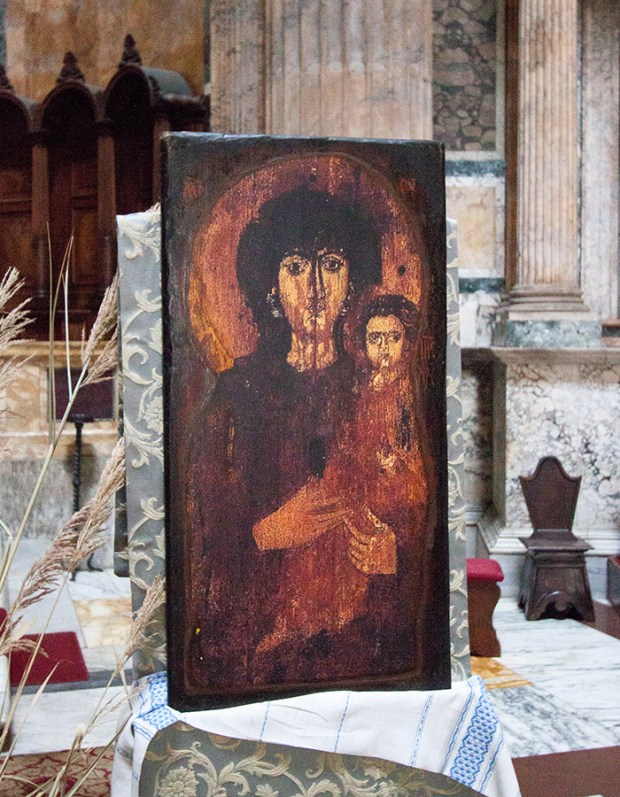The Madonna of the Pantheon, a rare and precious Byzantine icon housed in Agrippa’s Pantheon in Rome, has been meticulously restored, shedding light on a significant chapter in Christian history. The icon, dating from 609, marks the consecration of the Pantheon, an ancient Roman temple, as the Basilica of Santa Maria ad Martyres.
When the Byzantine Emperor Phocas gave the Pantheon to Pope Boniface IV, the temple was transformed into a church dedicated to the Virgin Mary and the Christian martyrs. It is believed that the icon was among the sacred offerings presented during this historic event.
The Madonna of the Pantheon is a Hodegetria, a traditional iconographic depiction of Mary holding the Christ Child and pointing to Him with her right hand. The Hodegetria is an iconographic representation of major theological significance within the history of Christian visual arts. It portrays the Theotokos (that is, the Mother of God or, more accurately, the God-bearer) holding the Child Jesus at her side – much like every other Madonna, yet with an important twist. In this icon, Mary’s right hand directs the viewer’s gaze towards Jesus. In short, she is showing the Way.
This motif has a rich tradition dating back to the 5th century. Legends oftentimes attribute the origin of such icons to St. Luke the Evangelist, whose work was said to have been discovered in the Holy Land by the Byzantine Empress Aelia Eudocia. According to Finestre Sull’arte, the Madonna of the Pantheon was once also attributed to Luke. He himself, tradition claims, would have given the icon to the Pope.

Originally painted in egg tempera on an elm wood panel, the Madonna of the Pantheon is a fragment of a once larger work. Over the centuries, this icon was highly venerated by pilgrims, leading to numerous attempts to preserve it, albeit with materials that ultimately did more harm than good. These layers of varnish and overpainting left the icon in a terrible state, requiring careful restoration.
The last significant restoration of the Madonna took place in 1961, after which it was moved to a small chapel in the Pantheon for its protection. A replica was placed over the altar to ensure the safety of the original. The recent restoration, completed over eight months, focused on gently removing previous restoration attempts and filling in areas of paint loss using modern, reversible techniques. The results were remarkable, bringing back the icon’s original golden hues and intricate details.
Back in 2023, Italy’s Ministry of Culture introduced an admission fee to the Pantheon –a decision that was initially met with public outrage. However, the fee has successfully funded the maintenance and restoration of this iconic site, including the precious Madonna. Despite the controversy, the Pantheon continues to attract visitors, ensuring that its treasures, both ancient and sacred, are preserved for future generations.



